Term archive
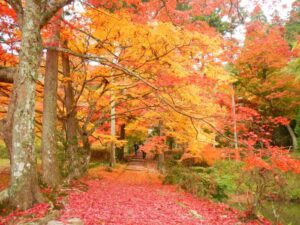
投稿タイプ:sightseeing
Ryuon-ji Temple
Ryuon-ji Temple was constructed in 1509. This Zen temple was the family temple of the chief retainer of the Sonobe Clan. Reknowned for its autumn colors, the temple grounds and approach become beautifully colored with over 20 maple and gingko trees.
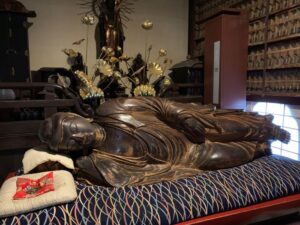
投稿タイプ:sightseeing
Anao-ji Temple
Anao-ji Temple is number 21 in the temples of the Saigoku Kannon Pilgrimage (a pilgrimage of 33 temples throughout the Kansai region, all of whom enshrine a principle image of the bodhisattva Kannnon). The temple's beautiful garden is designated as a scenic spot by Kyoto Prefecture. The reclining statue of the Buddha (Shakyamuni) enshrined in the temple's Main Hall is said to have healing properties: if you touch the statue's body in the same place where you yourself suffer an illness, you will recover from your ailments.
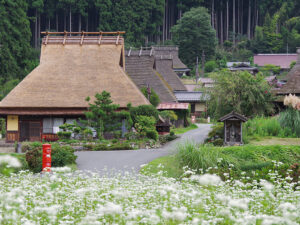
投稿タイプ:sightseeing
Miyama’s thatched village
The Miyama area is well known for its farmhouses that still use traditional thatched roofs. Kita is an area with a particularly large number of such houses, all positioned together in a village. The thatched roof homes and the rustic landscape of the surrounding countryside make for some particularly relaxing scenery.
On December 8, 1993, the Kita area was designated a Preservation District for Groups of Historic Buildings.
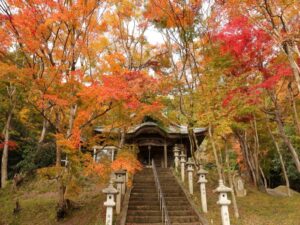
投稿タイプ:sightseeing
Saiko-ji Temple
The historic temple of Saiko-ji, located in Nantan City, Kyoto Prefecture, was founded in the year 756 by the Buddhist monk Ryoben. Saiko-ji is the 21st temple of the Funaigori Thirty-Three Kannon Pilgrimage (a pilgrimage of 33 temples dedicated to the bodhisattva Kannon), and is thought to have once been associated with high-ranking buddhist monks. The temple's principal icon, a seated statue of Amida Nyorai Buddha sits in the main Amida-do Hall, which was restored in the year 1799. The ranma (a traditional part of Japanese interior architecture, usually made of wood and/or paper panelling, which is attached to the part of the ceiling connecting rooms) has a spectacular dragon carved into it by the local Tango craftsman Nakai Gonji, and this ranma is now a designated cultural property of Nantan City. Also, every year on the Sundays that fall directly before the 16th and the 23rd of August, traditional Rokusai Nenbutsu Odori dances that also hold designated cultural importance to the city of Nantan are held at night. There are many old Japanese maple trees within the temple grounds, and if you walk up the stoned stairway to the bell tower, there is an excellent view of the autumn foliage.
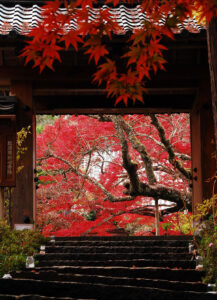
投稿タイプ:sightseeing
Jinzo-ji Temple
Located in Kameoka City, in the Woodland Kyoto area, Jinzo-ji Temple is a temple belonging to the Myoshinji school of Rinzai sect and is said to have been built by Saicho in 790. The Main statue of Bhaishajyaraja, known as the medicine Buddha, is said to have been made by Saicho as well. The temple burned down in 1575 but the main Buddha statue was saved and is now designated an important cultural property by Japan. The temple is particularly beautiful in the fall since the temple grounds has over 200 maple trees including one that is over 400 years old and 43 feet tall located by the stairs of the main hall. Furthermore, every year the temple holds illumination events where they light up the sakura and fall colors at night making it even more beautiful.
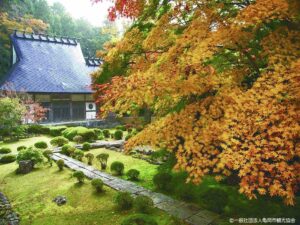
投稿タイプ:sightseeing
Hojo-ji Temple
Hojo-ji Temple is located in the Woodland Kyoto area of Kyoto Prefecture near the border with Osaka Prefecture. Hojoji belongs to the Myoshinji school of Rinzai Buddhism. It was built in 1641 and had a strong connection with Emperor Go-Mizunoo and contains art given by the imperial family. The temple grounds are overgrown with giant trees and mossy stone steps lead to the temple under a canopy of trees giving the temple an unexplored atmosphere. The temple is also famous for its autumn leaves which cover the entire temple in golden leaves and is designated as a scenic spot by Kyoto Prefecture.
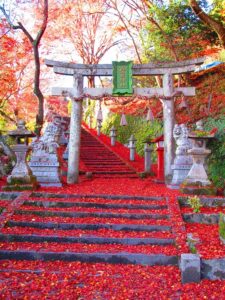
投稿タイプ:sightseeing
Kuwata-jinja Shrine
Kuwata-jinja Shrine in located in Yamamoto, Kameoka City, Kyoto Prefecture. It was listed in the government's official compliation of shrines, the "Engi-shiki Jinmyo-cho," and it was formerly ranked as a "village shrine." The mountainside behind Kuwata-jinja Shrine, which stretches to the entrance to the Hozukyo Gorge, is covered in an forest of evergreen beeches and oaks, which, together with the Hozu-gawa River flowing below, makes for some marvelously soothing scenery.
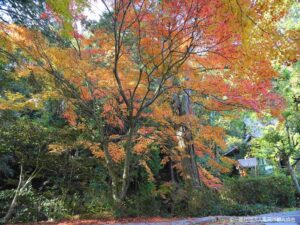
投稿タイプ:sightseeing
Ryotan-ji Temple
Ryotan-ji Temple has long been visited by worshippers who believe in the temple's ability to heal worms in children. It is also said that the statue of the blue-faced spirit Shomen Kongo in the Koshin-do Hall has strong powers against illness and demons. The garden in front of the temple hall is designated a scenic spot by Kyoto Prefecture, and the relaxing temple grounds are also known for their use as a film location.
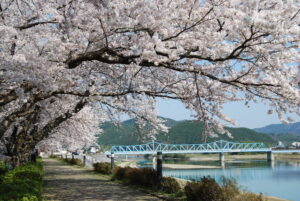
投稿タイプ:sightseeing
Oi-gawa River Dike
Of the Yoshino cherry trees that line the right-hand bank of the Oi-gawa River for about 300 meters, some are 100 years old, and about 30 of these trees grow dotted along the riverside.
In the park on the left bank, visitors will be welcomed by the blossoms of about 100 Yoshino and weeping Shidare cherry trees.